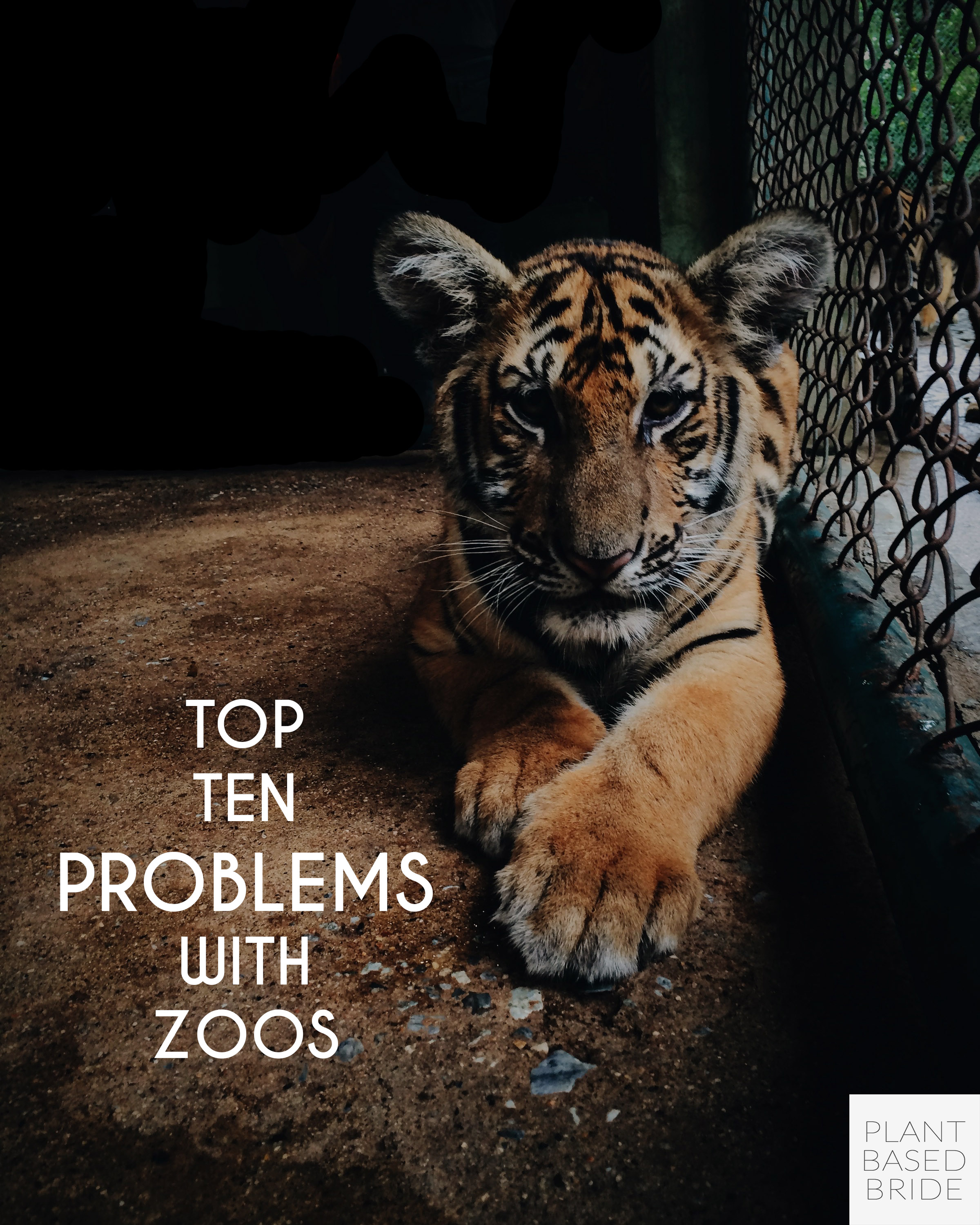
the blog.
The Loss of Harambe is a Terrible Tragedy
This past Saturday marked the loss of Harambe, a 17-year-old silverback gorilla, one of less than 900 remaining in the world. Held captive at the Cincinnati Zoo, Harambe's life was sacrificed when a 4-year-old boy entered his enclosure.
This past Saturday marked the loss of Harambe, a 17-year-old silverback gorilla, one of less than 900 remaining in the world. Held captive at the Cincinnati Zoo, Harambe's life was sacrificed when a 4-year-old boy entered his enclosure.
Reading about this utterly avoidable tragedy has left me shocked and devastated. Harambe's only crime was existing in a world in which his life has no value. The boy chose the enter the enclosure, which should have been impossible with better barriers and child supervision.
It is believed that the 400 pound gorilla was in fact trying to protect the boy from the massive screaming crowd at the enclosure's edge. Videos have emerged in which Harambe and the boy held hands, and onlookers have stated that Harambe did not engage in any threatening behaviour towards the boy.
It may be impossible to get the whole story, but this is what we have so far:
Once upon a time there was a gorilla named Harambe, one of the very few remaining mountain gorillas in the world. He was born in a zoo in Texas where he lived for 16 years before being transferred to the Cincinnati zoo in 2015.
The day after his 17th birthday the zoo was crowded for the memorial day weekend. The mother of the boy in question was caring for several young children and bystanders overheard the boy talking about wanting to go into the water (a moat within the exhibit) and his mother telling him no.
Another woman at the zoo tried to grab the boy before he went in, but wasn't able to. The boy fell into the water, and Harambe, who was in a cave nearby, came out to investigate.
Bystanders began to scream as the gorilla stood over the boy, seemingly protecting him from the crowd above. He then proceeded to drag him out of the water and away from the crowd by the leg, an act viewed as violence by the fire department's first responders, but actually a common behaviour for gorillas and their young and likely an act of protection.
The boy clearly did not feeel threatened, as he reached his hand out for Harambe's, which the gorilla took.
The boy was still sitting between Harambe's legs when the gorilla was shot and killed.
The boy was returned to his mother and sent to the hospital with no critical injuries, and an endangered species became even more endangered thanks to the most dangerous species on the planet.
Since then there has been a public outcry. How could this have happened?
The mother released a statement on Facebook: 'My son is safe and was able to walk away with a concussion and a few scrapes... no broken bones or internal injuries. As a society we are quick to judge how a parent could take their eyes off of their child and if anyone knows me I keep a tight watch on my kids. Accidents happen but I am thankful that the right people were in the right place today.'
A bystander said: 'This was an open exhibit! Which means the only thing separating you from the gorillas, is a 15 ish foot drop and a moat and some bushes! This mother was not negligent and the zoo did an awesome job handling the situation! Especially since that had never happened before!'
Many, however, are arguing just that - that the boy's parents are at fault.
A change.org petition calling for the parents and the zoo to be held accountable has almost 40,000 signatures (you can sign it here). They state on their page: 'In light of the recent tragedy at the Cincinnati Zoo in the death of Western Lowland Gorilla Harambe and the enormous loss of this CRITICALLY ENDANGERED animal, we would like to pass Harambe's Law, so there are legal consequences when an endangered animal is harmed or killed due to the negligence of visitors. If this law is enacted, it will not only protect the animals, but will hold individuals accountable for actions resulting in harm or death of an animal. '
Even the zoo director has admitted that Harambe was not attacking the boy. He stated: 'You're talking about an animal that's over 400 pounds and extremely strong. So no, the child wasn't under attack but all sorts of things could happen in a situation like that. He certainly was at risk,'
He also explained that tranquilizing Harambe was not an option, as it would not have an immediate effect and that 'The impact from the dart could agitate the animal and cause the situation to get much worse.'
So what could have been done differently?
Well, first of all, there is the enclosure.
'Yet again, captivity has taken an animal's life. The gorilla enclosure should have been surrounded by a secondary barrier between the humans and the animals to prevent exactly this type of incident.' Primatologist Julia Gallucci, through PETA.
Dr. Samantha Russak, a zookeeper, stated: 'There really is no way to combat the current level of stupidity of the general human population. You can put up multiple fences and gates and electric wire and there will still be someone who is determined enough (or in this case, small enough) to get into an enclosure. This child had to go under bars (i.e. protective barrier #1), through electric wire (i.e. protective barrier #2), and down into a moat (i.e. protective barrier #3) to reach the gorillas... And as a corollary to this point, zoos have an ongoing battle trying to design enclosures that are best suited for the animal, while still ensuring the safety of both animals and the public, and also allowing the public to view the animals. Coming up with the perfect enclosure that meets all of these needs is not an easy task.'
So there were some 'barriers' in place, but clearly they were not particularly effective. While I sympathize with Dr. Russak's statement that zoos struggle to design effective enclosures for both the animals and the humans paying to stare at them, safety should be their number one concern. They KNOW that children small enough to get through the bars will be visiting. They should have had the foresight to prevent it.
Or perhaps, animals shouldn't be held captive for human entertainment in the first place.
I have already written an entire post about zoos (read it here) but feel that some points deserve to be reiterated here.
- Animals do not exist for our entertainment.
- No one deserves to be chained or caged for their entire lives.
- No individual should be killed for who or what they are.
Harambe never should have been in a zoo to begin with. He was born in a zoo in Texas. He lived his entire life in captivity. He was described as 'very intelligent. His mind was going constantly. He was just such a sharp character.' By Jerry Stones, who raised Harambe at the Gladys Porter Zoo, in Bronwsville, Texas. He deserved a life of freedom, in his natural habitat. The ability to form family bonds and find purpose and happiness.
Instead, he was kept in a cage for humans to gawk at for 17 years and then shot for trying to protect a little boy.
But what about the boy's parents? Shouldn't they have been the ones protecting their son?
It would have taken more than a couple of seconds for the boy to get into the enclosure. His parents should have been watching him, especially after he repeatedly stated that he wanted to go into the water.
More from Dr. Samantha Russak: 'Lack of parenting and human stupidity once again causes the death of a magnificent, innocent animal. When will we stop destroying everything on this planet?'
Harambe was killed because of the negligence of this boy's parents and bystanders. Of course no one would have wanted this little boy to be hurt or even killed, but he would have been safe had he been properly supervised.
Why was Harambe shot rather than tranquilized?
This is not the first time that children have found their way into an enclosure with a gorilla. In both the 1986 and 1996 cases, the gorillas were not killed AND the children were rescued.
So why didn't they tranquilize Harambe rather than shooting him?
As we learned from the zoo director, tranquilizers do not take effect immediately: '...getting hit by a dart would not make a 400 pound animal very happy, so it is likely that he would take out aggression on an object nearby, in this case the boy. And even if he didn't get angry at being darted, if he fell on top of the boy, that is 400 pounds of solid muscle now crushing and suffocating a 4 year old boy.' -Dr. Samantha Russak.
My question is, wouldn't there be an equal risk with a gunshot wound? Being shot is not necessarily immediately fatal, and couldn't that severe pain have served to aggravate Harambe even more than a tranquilizer dart?
Further, a gorilla who has been shot is equally as likely to fall on the boy sitting at his feet as one who has been tranquilized, crushing the boy with his 400 pound weight.
As I see it, shooting Harambe was equally risky for the boy, and far worse for the gorilla.
Zoo director Maynard said: 'We are all devastated that this tragic accident resulted in the death of a critically-endangered gorilla. This is a huge loss for the Zoo family and the gorilla population worldwide.'
Perhaps they should have done more to protect Harambe, rather than throwing his life away.
As usual, the outrage at the death of Harambe, a western lowland gorilla deemed critically endangered by the World Wildlife Fund, far outweighs that of the animals suffering in the meat, egg, dairy, and fur industries (among many others) every single day.
No life is worth more than another, and while Harambe's death is a significant and heartbreaking loss, so are the lives of the cows, pigs, and chickens taken in devastating numbers.
Perhaps the awareness raised by this event will allow more people to open their eyes to animal suffering and to do their part to end it.
RIP, Harambe. You will be missed.
Until next time,
Top Ten Problems With Zoos
I understand the appeal... a day out with the family, road trip, sunshine, adorable baby animals from exotic lands...
But zoos aren't all they're cracked up to be.
The recent documentary film Blackfish has brought the whole world's critical attention to SeaWorld, and further, to zoos in general.
And yet, somehow, zoos and other establishments capitalizing on the lives of animals for human entertainment around the world are still in business.
Stick around for ten sobering problems with zoos. Hopefully you'll be convinced that your hard-earned money is far better spent supporting conservation efforts for animals in the wild and buying vegan food for your family than taking this particular type of day trip.
I understand the appeal... a day out with the family, road trip, sunshine, adorable baby animals from exotic lands...
But zoos aren't all they're cracked up to be.
The recent documentary film Blackfish has brought the whole world's critical attention to SeaWorld, and further, to zoos in general.
And yet, somehow, zoos and other establishments capitalizing on the lives of animals for human entertainment around the world are still in business.
Stick around for ten sobering problems with zoos. Hopefully you'll be convinced that your hard-earned money is far better spent supporting conservation efforts for animals in the wild and buying vegan food for your family than taking this particular type of day trip.
ONE... Life in Captivity
These animals are imprisoned, no ifs, ands, or buts about it. Ever notice the bars and glass preventing animals from leaving their pens? Zoos are not a resort for exotic animals, zoos are a jail. If you think for one moment that these animals prefer to live in a cage over their vast natural habitat, you are sorely mistaken.
TWO... Man's Best Friend
Dogs and cats? Sure. Lions and tigers? I don't think so. The exotic animals held in zoos are not domesticated. They are wild, just as they should be. They could no more live with you in your one bedroom downtown apartment than you could survive on the Savannah without air conditioning and your macbook. Wild animals should not be in such close and constant contact with humans.
Why not?
Because the more time they spend with us, in our 'care', the less able of living on their own in their natural habitat they become. They become dependent on us.
Not only are we imprisoning them, but we're taking away their ability to survive if we ever tried to correct our mistakes and set them free.
THREE... The Pursuit of Happiness
I don't know if you've ever noticed, but animals in zoos don't look very happy. Would you be, sentenced to life in prison when you had done nothing wrong? I think not.
Some argue that there is no way to confirm or deny an animal's sadness. Well I beg to differ. We can see their unhappiness in their eyes. And if that's too 'spiritual' for you, why not look at the plain facts?
Animals in captivity exhibit unnatural behaviours such as apathy, aggression, and stalled maturation (prolonged infantile behaviour). They also carry out a wide spectrum of stress behaviours, ranging from pacing to self-mutilation and beyond. These are not behaviours noted in the wild.
Abnormal repetitive behaviour is a term used to describe these stress behaviours, anything from pacing back and forth or circling, rocking from side to side, head bobbing or weaving, continuous licking or biting of walls and bars, overgrooming and self-mutilation, vomiting, and eating feces. For video examples of these behaviours, click here.
You don't need to be an expert to see that those animals are NOT happy.
FOUR... Profit Over Conservation
Contrary to popular belief, a zoos' main purpose is not conservation. It's profit.
Need proof?
The Toronto Zoo lists seven endangered species which they are attempting to breed in captivity and reintroduce to the wild on their website . That's seven out of more than 460 species found at the zoo, or just 1.5%.
And the profits? Just some simple math considering their over 100,000 person attendance in March 2013 and the cost of a ticket ($23 for an adult, $14 for a child), even assuming equal numbers of both, the zoo would be bringing in 1.85 million dollars in a single month, without considering the generous donations they undoubtably receive.
Something seems off with this equation, and I don't think it's my calculator.
Oh, and another tidbit, just for fun. The Toronto Zoo clearly states on their lion information page that "Lions are losing their habitat due to the expansion of human activity (primarily agriculture)..." and yet they serve the results of animal agriculture to the masses of visitors flooding through their gates each and every day.
Conservation is clearly the priority here.
FIVE... Lifespan
Many claim that animals live longer in captivity, but this may not be quite as accurate as they would hope. While some individuals may live longer due to lack of predators and competition for food; stress, obesity, and other factors lead to the early death of many zoo animals.
One study found a difference of almost 40 years between elephants in captivity (living an average of 16.9 years) and those in the wild (an average of 56 years).
Orcas? Their lifespan is cut by as much as 87 years (from a lifespan of up to 100 years for females in the wild to an average lifespan of 13 years at SeaWorld).
Perhaps they would be better off in their natural habitat?
SIX... Victim Blaming is NOT the Answer
The solution to hunting and poaching is not to displace the animals, but the hunters and poachers. Why should the victims be further punished?
Of course hunting and poaching are immoral behaviours and the animals must be protected. But we need to imprison the abusers, not the abused.
SEVEN... What's 'Natural' Anyway?
Definitely not the tiny enclosures with painted backgrounds in zoos all over the world. These pens are not these animals' natural habitat, nowhere close. Who could ever think that a 5.8 million gallon pool at SeaWorld is equivalent to the over 350 quintillion gallons of water in the world's oceans? Or a 10,000 by 10,000 meter enclosure sufficient when wild African elephants walk more than 50 miles (more than 80,000 meters) per day?
Zoos are poor imitations of the many incredible ecosystems on Earth, and a poor substitute for a home.
EIGHT... The Birds and the Bees
Zoos are known for their breeding programs, both because they tout them proudly as conservation efforts for endangered species, and because they produce the cute cuddly baby animals we all love to gawk at.
As a statement from SeaWorld so eloquently put it: "Breeding is a natural, fundamental and important part of an animal's life and depriving a social animal of the right to reproduce is inhumane."
Because keeping Orcas in tiny pools and forcing them to do tricks in front of thousands of screaming people is a natural, fundamental and important part of an animal's life, and social animals love to have no choice whatsoever in whether or not they reproduce, and with whom.
Right.
What happens when one too many cute baby animals have been bred and there's not enough space to keep them? There are two options: kill them (after which point they may be fed to other captive animals) or sell them.
Who would buy surplus zoo animals? Other zoos, exotic animal dealers, ranches, circuses, pet shops, research centres, and the exotic meat industry.
And the zoo pockets the cash.
NINE... A Life Full of Purpose
Quiz time! Where do you think a lioness is most able to fulfill her life's purpose: on the African savannah with her 7 or so fellow adult pride members and cubs, contending with other predators, hunting for food, and protecting her young OR being forced into association with other lions, fed at regular intervals, selectively bred, and kept in a small enclosure free from other species or any true semblance to her natural habitat?
I think the answer is pretty clear.
TEN... Which E Is It?
Everyone loves to bring up the point that zoos are educational.
I'd argue that zoos are far more entertainment than education.
I can learn much more over the course of 15 minutes on the internet than I can watching animals suffering from zoochosis in an unnatural habitat for those same 15.
Perhaps families should commit more time to the watching of documentaries and reading of books rather than contributing to the unnecessary and cruel exploitation of animals.
They've done nothing to deserve it.
Well, there you have it, ten of the most poignant problems with zoos. I, for one, will never again attend a zoo, circus, or other area of captivity for non-domesticated animals.
What are your thoughts on zoos? Start a conversation in the comments!
Until next time,
Don't forget to subscribe to the Plant Based Bride newsletter below the comment section! Get first dibs on freebies, news, and other fun stuff and be in direct contact with yours truly.
(You know you want to.)
Sources & Further Reading
http://www.all-creatures.org/articles/ar-zoos.html
http://www.veganpeace.com/animal_cruelty/zoos.htm
http://www.peta.org/living/entertainment/reality-zoos/
http://www.bornfree.org.uk/campaigns/zoo-check/captive-wildlife-issues/abnormal-behaviours/
http://www.onegreenplanet.org/animalsandnature/the-life-of-animals-in-captivity-versus-the-wild/
http://www.onegreenplanet.org/animalsandnature/the-life-of-animals-in-captivity-versus-the-wild/
http://www.cnn.com/2015/10/08/us/seaworld-orca-tank-expansion-plan-hearing/
http://www.seaworldofhurt.com/features/8-reasons-orcas-dont-belong-seaworld/
http://www.thestar.com/news/gta/2010/01/13/tusk_tusk_toronto_is_on_worst_zoo_list.html
http://oceanservice.noaa.gov/facts/oceanwater.html
http://www.onegreenplanet.org/news/zoochosis-what-really-happens-to-animals-in-captivity-video/


































